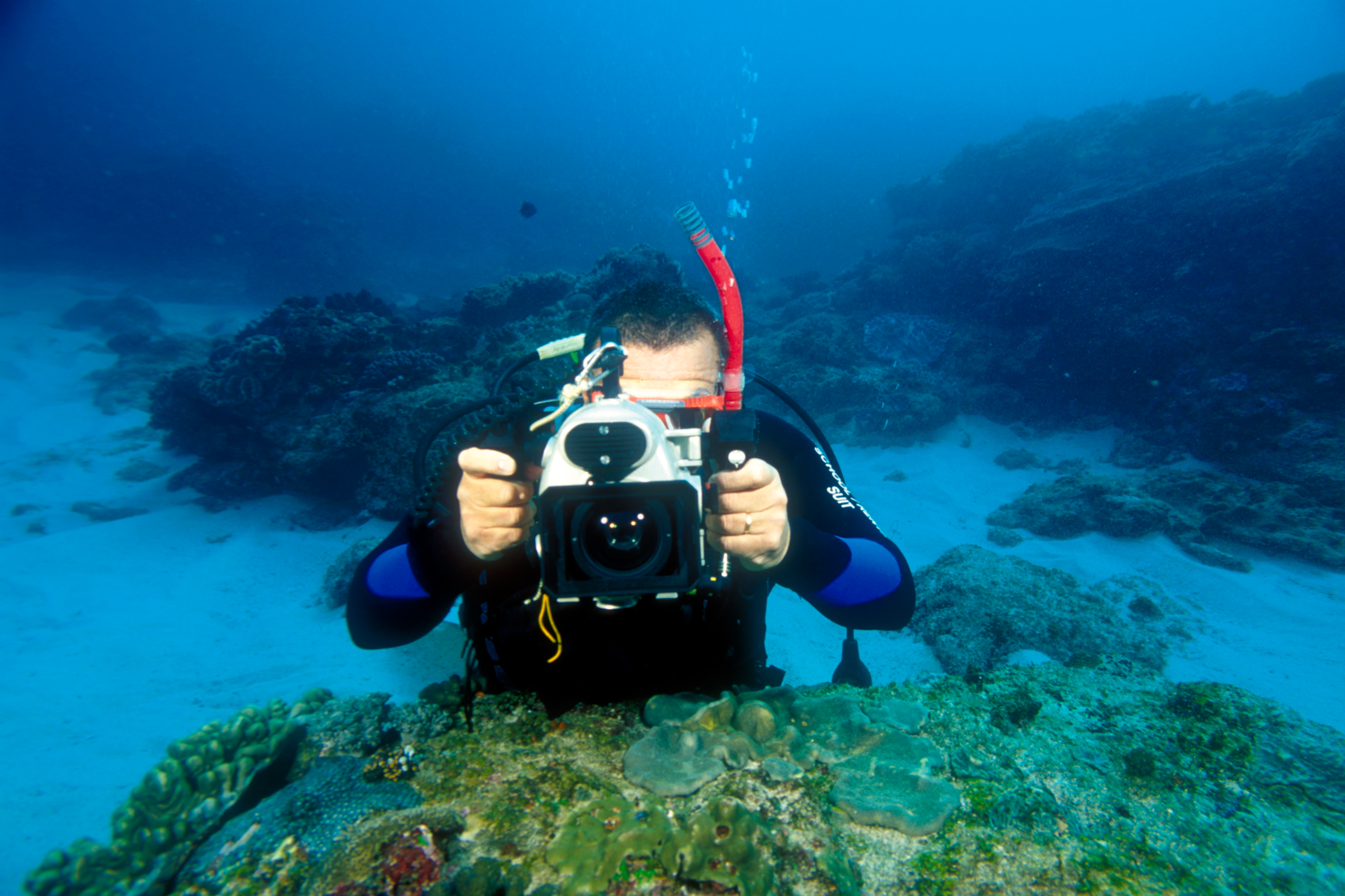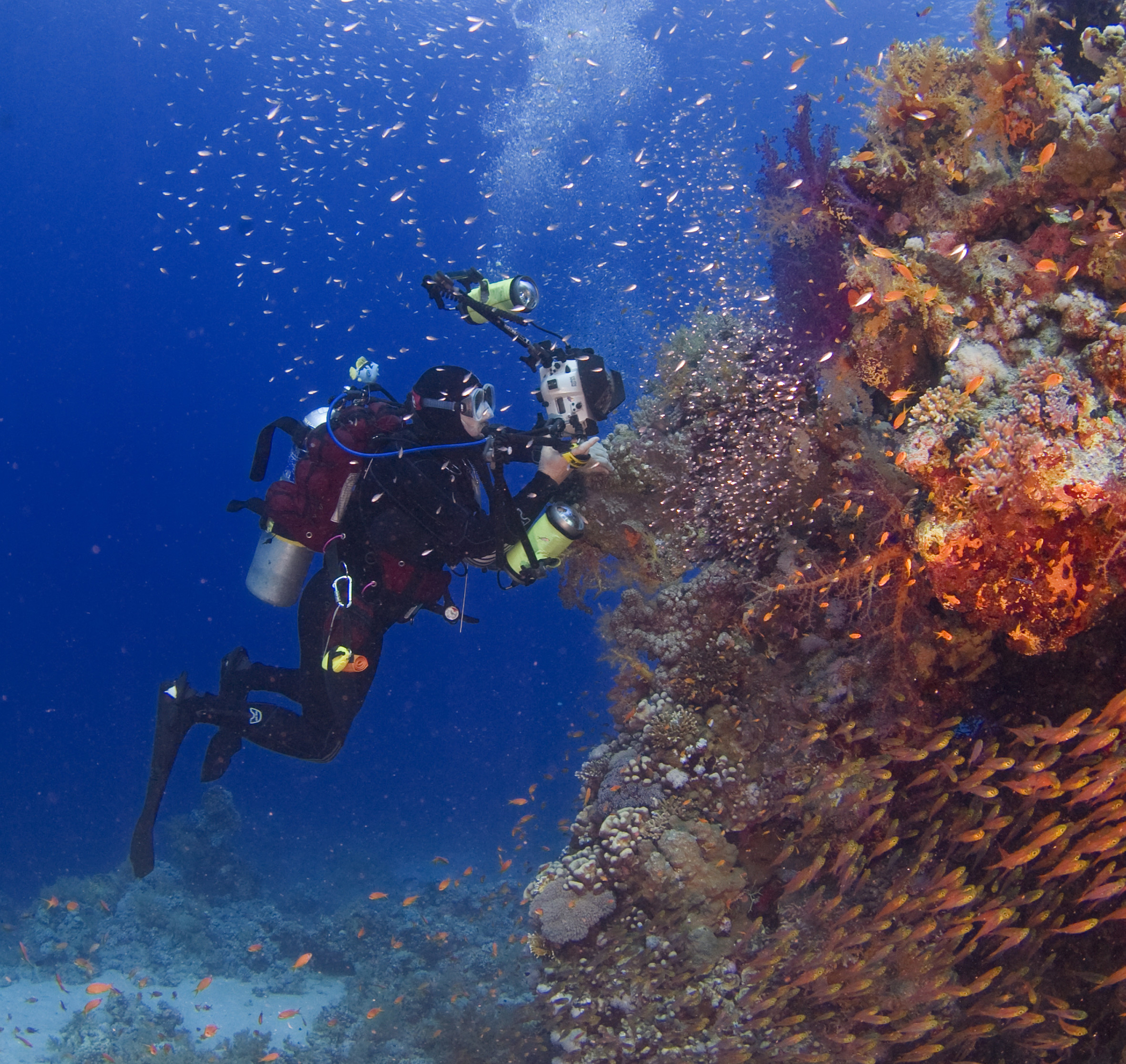Photography has seen a resurgence in popularity in recent years, particularly with the advent of smart phones allowing us all to take high quality snapshots on a whim. With the abundance of amazing and beautiful creatures underwater, photography has become a popular past time for Scuba Divers too.
When it comes to underwater photography, a number of considerations must be taken in mind. Putting aside the suitability of the equipment itself, of greatest importance must be safety considerations. Personal safety must take priority over getting into caves, crevices or deep sites beyond experience and expertise when attempting to locate that most unusual and exciting of subjects. Most photographers have a buddy somewhere in the ocean. How often does it feel to them buddy that they are self-reliant? Is that fair, and what happens if they’re the one running into problems?
While making sure neither the photographer nor their buddy gets into difficulty, of equal importance under the ‘safety’ umbrella is that of the subject itself. One of the easiest ways of preserving safety of both one’s self and that of the subject is to maintain appropriate buoyancy. Not only does this help to ensure that you don’t get cut or stung by marine life such as fire coral or urchins, it also minimises damage to the reef itself. One wayward fin kick is enough to cause years’ worth or coral growth to be destroyed. Either that or stirring up the sand form the sea bed will just result in a photo full of backscatter reflecting the light and obscuring the subject. Equally, using buoyancy skills to move off once the photos have been taken are required. Use of breath control techniques will ensure you’re able to move away from the reef without damaging it.

Photographer using buoyancy skills to get the perfect position.
So once in position, what then? A quick trawl of dive literature indicates a number of reports of ‘inappropriate dive behaviour’. Most of the time, these reports tell of people moving marine life into more photogenic positions or provoking them into providing a response, such as pufferfish puffing up or shark species barring their teeth. Some reports even describe people breaking corals for a better shot of the subject. In most cases, this results in stress to the subject and may result in long term damage to the ecosystem as a whole. Needless to say, this is a big no-no!
Once a subject has been identified, buoyancy established and the reef system untouched, the photographer is now able to start to snap. This sets up a new consideration; how to light it and how many shots to take? With digital systems, strobes can be attached to enhance the shot and restore colours lost at depth. Alternatively, the subject may be lit with the flash system built in to the camera. Either way, excessive or inappropriate lighting of the subject may dazzle it and may even cause it to be stunned, much like a rabbit in car headlights. While the lack of vision may be temporary, it may last just long enough for it not to notice it’s being lined up for lunch until it’s too late! Consideration for the subject’s welfare clearly takes on many guises.

Careful & considerate use of lighting avoids causing stress to the subject.
Composition of the shot will come with practice. Taking hundreds of shots in the hopes of getting one or 2 good ones doesn’t make a great photographer. Most of the best photos have been taken by chance! Take a few of the subject, move off and look around for another then come back to the original if there’s nothing better. A least give the poor beast a chance to recover and move off to somewhere it feels safe if it feels it needs to.
If you come across another diver taking photos, this is generally a sign that there is something worth looking at, so what to do then? Simple. Wait. The diver will move off to the next subject at some point. Don’t push the diver away so you can get your lens in, this may put their safety and that of the reef at risk, and if they take umbrage, it can ultimately mean your safety is at risk too! Patience can be rewarding, just ask anyone who’s played with the seals in Farnes! Quite often, your consideration and generosity of time is rewarded. Something more interesting happens behind the diver’s back which you are able to witness and once they’ve taken their photos, they are likely to invite you in to position and show you exactly what has been so photogenic.
So to summarise photography etiquette:
- Don’t put yourself, or your buddy, in harm’s way. Stay within your limits of diving experience.
- Don’t touch the reef or the subject of your photos.
- Maintain appropriate buoyancy and use these skills to get into and out of position.
- Be polite and patient, it may well lead to surprising results!
Whether you’re the buddy helping find the subject or the photographer always remember; ‘take only photos, leave only bubbles’.
